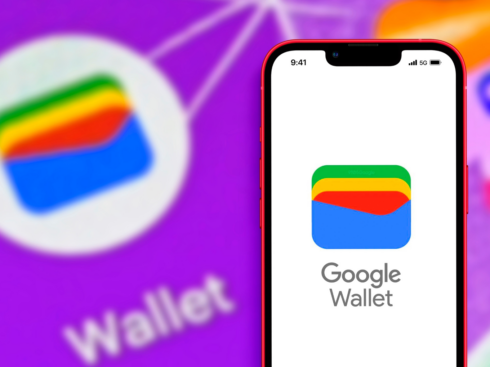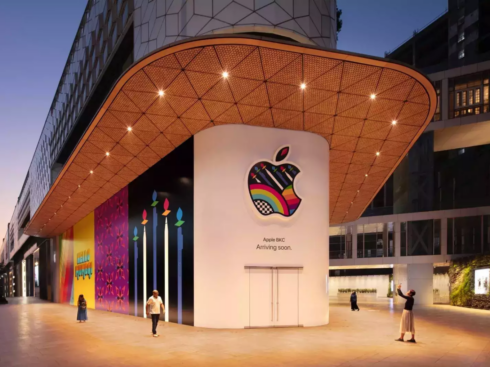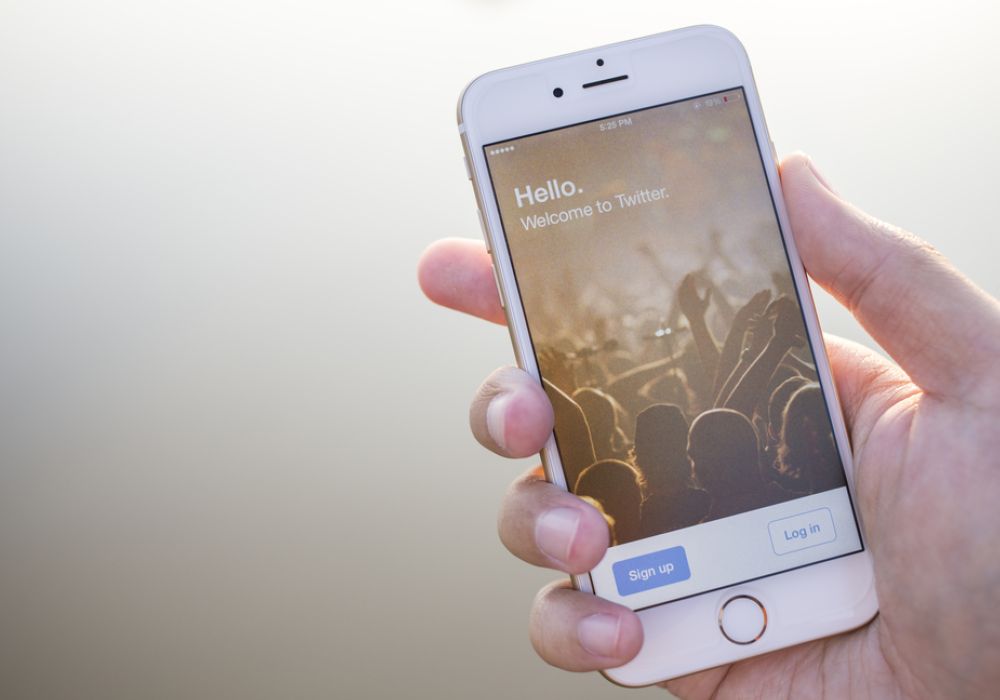
Near the end of every summer, we eagerly await the release of the new iPhone. We read the rumors, debate the details, and prematurely celebrate what might happen. We’re a bit like Pavlov’s dogs by now, aren’t we? Once September kicks around, everyone is eagerly awaiting that keynote — eager to get a look at what will (or won’t) change.
With the recent announcement of the iPhone 7 fresh in our minds, we dusted off our very first Apple iPhones to see what a difference nine years can make. Lots of things have changed, from screen resolution to screen size, from function to power. One thing has stayed the same, though: the iPhone is consistently at the forefront of mobile innovation and design.
When it All Began: MacWorld 2007
That first announcement was pretty unforgettable. It was perhaps the most exciting thing to happen at Apple since Steve Jobs pulled the iPod nano out of his tiny jeans pocket. Sure, Jobs had a special knack for presentation and a unique style of salesmanship, but what he was showing the world was nothing short of revolutionary, and he was well aware of it.
Jobs took his time with that presentation. He slid the phone out of his pocket for just a second before sliding it back, hiding it from the audience to build anticipation. He talked about the rigidity of current “smart” phones and how the UI could not be easily updated. He showed the world how Apple had already solved this problem on computers with bitmap screens — before reminding everyone about that time he invented the mouse.
And that’s when he brought up a picture of the very first iPhone.
2007: iPhone
- iPhone screen dimensions: 3.5 inches
- Screen Resolution: 320×480 – 160 pixels per inch (ppi)
- Camera: 2 MP
The very first iPhone had a 3.5-inch screen. Jobs said “it’s really big” — and he wasn’t being sarcastic. While we might be spoiled with mammoth tablet-sized phones these days, at the time, the screen on the iPhone was unreal. Likewise, at 11.6 millimeters, it was also the thinnest smartphone on the market. The camera was a whopping 2 megapixels (MP) and while that may seem horribly subpar by today’s standards, it was the best of its time. The Blackberry Pearl 8100 (announced only months before the iPhone) had a 1.3 MP camera.
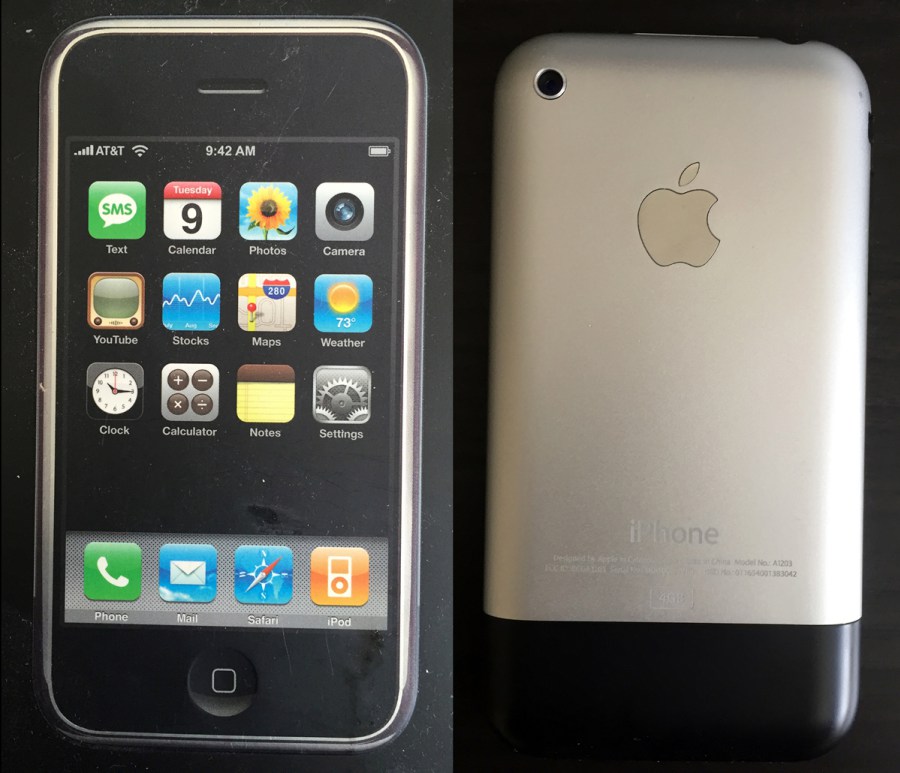 But let’s go back to that screen. In the presentation, Jobs made a big show of “unlocking” the phone — not for pomp and circumstance, as it may appear to us now, but because there were no buttons on it.
But let’s go back to that screen. In the presentation, Jobs made a big show of “unlocking” the phone — not for pomp and circumstance, as it may appear to us now, but because there were no buttons on it.
Save the home button at the bottom, the entire phone was a touch screen. People literally didn’t know how to use it! The only other product that could claim such a feature was the IBM Simon, released in 1994, and the iPhone beat it ten-fold. Apple gave us our very first true touch screen with the iPhone.
Even though it changed the future of smartphones, the first generation iPhone was not without its limitations. Apple was heavily criticised for releasing a phone that was not 3G capable at a time when 3G was becoming standard. In addition, Apple signed a 5-year exclusive contract with what was then Cingular but eventually would become AT&T. While this had the intended effect of many people switching carriers, it also made people that didn’t want to switch angry that the iPhone wasn’t available to them, leading to the jailbreaking trend (and many inoperable iPhones).
2008: iPhone 3G
Quick Specs:
- iPhone screen dimensions: 3.5 inches
- Screen Resolution: 320×480 – 160 ppi
Camera: 2 MP
By the iPhone’s first birthday, Apple had sold 6 million iPhones. Thanks to vocal fans and critics, Apple learned a lot from their first iPhone. With their second phone, Apple sought to take on many of the issues critics had lobbed at their original device. While the second iPhone looked the same as the first, the biggest changes appeared as two little icons on the home screen.
As the name would suggest, this iPhone was 3G compatible, which allowed immense jumps in download speed and blew the doors wide open for the biggest advancement in a phone yet: GPS.
This was really the first big step toward the creation of an all-in-one device. People now had a phone, an email client, and a GPS all in one little device that fit inside their pockets.
With the addition of the App Store, they took a second giant leap in one day. The App Store created a space to facilitate third party app development, which paved the way for the millions of apps that are currently available.
2009: iPhone 3GS
Quick Specs:
- iPhone screen dimensions: 3.5 inches
- Screen Resolution: 320×480 – 160 ppi
- Camera: Photo – 3.15 MP, f/2.8, autofocus / Video – 480p@30fps
In 2009, Apple Senior Vice President Phil Schiller was chosen to announce the iPhone 3GS, as Steve Jobs was recovering from a liver transplant. In true Apple style, Phil recapped the wild success of the iPhone 3G, but he didn’t waste any time getting to the new features of the 3GS. It was faster (the “S” stood for “speed”), Voice Control was introduced (the precursor to Siri), and the improved camera would feature autofocus and touch focus.
But the biggest addition to the iPhone 3GS was video. The original iPhone put a high-quality camera in the hands of every single user. Then the App Store’s third party app support catapulted photo-sharing to the forefront. People began texting, sharing, and uploading photos daily. So it shouldn’t come as any big surprise that when Apple put a video camera (and editor) in the pockets of millions of people, naturally video-sharing exploded.
2010: iPhone 4 (2011: CDMA Version)
Quick Specs:
- iPhone screen dimensions: 3.5 inches
- Screen Resolution: 640×960 – 326 ppi (first Retina display)
- Back Camera: Photo – 5 MP, f/2.8, autofocus, LED flash / Video – 720p@30fps on back
- Front Camera: Photo – VGA / Video – 480p@30fps
In June 2010, Steve Jobs was back at Apple’s Worldwide Developer’s Conference (WWDC) and it was obvious that he was excited to be back on stage (and to be showing off another new product). The iPhone 4 was thinner (9.3mm), faster (using the new A4 chip), and featured a stainless steel band around the perimeter to serve as the antenna.
The iPhone 4 brought us the very first Retina display — dramatically improving the iPhone’s resolution from 160 ppi to 326. The more pixels you have on a screen, the sharper it will look, meaning that Apple had now provided the iPhone with a stunning screen. Suddenly, reading on the iPhone was a lot easier on the eyes.
But really, the most exciting improvements to the iPhone 4 involved the camera. The new iPhone included a front-facing camera, a flash, HD video, and the video editor iMovie. While the obvious use for a front-facing camera might be taking selfies with friends, Apple primarily used the new tech to show off FaceTime.
Jobs even made a FaceTime call right from the stage to show people what a powerful tool it was. He knew that this would change the way we communicated — and he was right.
2011: iPhone 4S
Quick Specs:
- iPhone screen dimensions: 3.5 inches
- Screen Resolution: 640×960 – 326 ppi
- Back Camera: Photo – 8 MP, f/2.4, 35mm, autofocus, LED flash / Video – 1080p@30fps
- Front Camera: Photo – VGA / Video – 480p@30fps
On October 4, 2011, Phil Schiller took a smaller stage to introduce the iPhone 4S — the first “world phone,” in that it switched between GSM and CDMA antennas so that it could literally be used anywhere. From the outside, very little had changed, but the hardware had undergone a dramatic upgrade. Apple replaced the A4 chip with the A5, making graphics run seven times faster than on the iPhone 4, which gave developers a lot of extra power to play with.
Again, the camera in the 4S was greatly improved upon, partially thanks to the faster processor. In addition to offering 1080p HD video in the rear-facing camera, Apple introduced a backside illumination detector to assist in low-light situations and a hybrid IR filter for more accurate color.
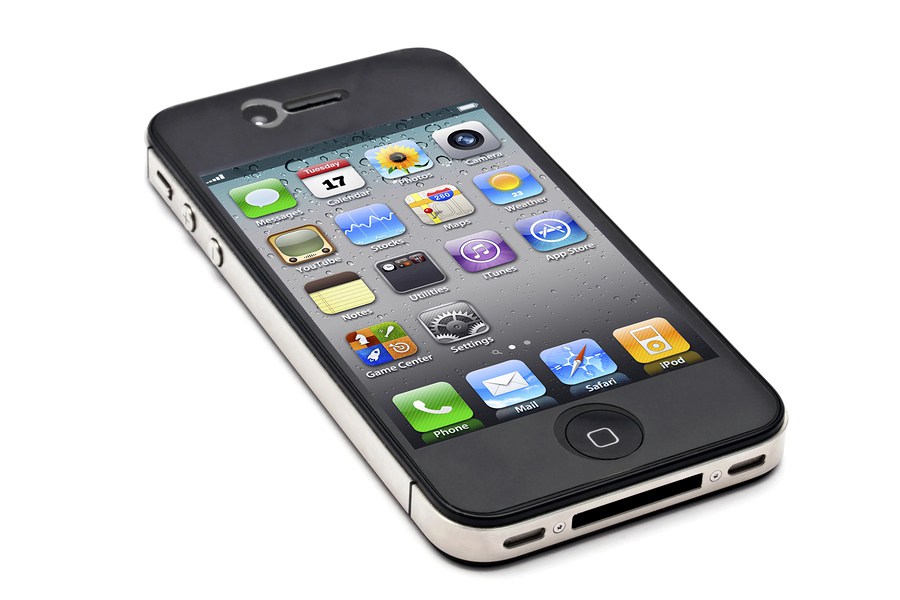
This is also when Siri was introduced, breaking ground in AI technology through a virtual assistant that understood the intent behind your words, instead of just the words themselves. If you asked Siri: “Do I need an umbrella today?”she knew that you were wondering if it was supposed to rain and she would show you the forecast for your geographic location.
The day after the announcement, Steve Jobs passed away at the age of 56.
2012: iPhone 5
Quick Specs:
- iPhone screen dimensions: 4 inches
- Screen Resolution: 640×1136 – 326 ppi
- Back Camera: Photo – 8 MP, f/2.4, 35mm, autofocus, LED flash / Video – 1080p@30fps
- Front Camera: Photo – 1.2 MP, f/2.4, 35mm, face detection / Video – 720p@30fps
Only 11 months after the iPhone 4S was announced, new Apple CEO Tim Cook took the big stage with Phil Schiller to announce the iPhone 5. Following tradition, the 5 was thinner (7.6mm), faster, and lighter. But for the first time since it’s introduction, the screen was bigger. Instead of the standard 3.5-inch screen, a 4-inch Retina display had taken its place, adding another row of icons to each page.
Apple worked with Sprint, Verizon, and AT&T (as well as carriers across the world) to make sure that the iPhone 5 was 4G LTE compatible, which increased speed. Apple also replaced the A5 with the A6, once again upping the phone’s processing power by a considerable amount.
There was one challenge left for Apple, however: they had to make the camera on the iPhone 5 better and smaller at the same time. In order to accomplish this, they used the same optics from the 4S, but enhanced its low light capabilities, added spatial noise reduction, and topped off the camera lens with a sapphire crystal cover. And who could forget the introduction of panoramic photos?
2013: iPhone 5C and 5S
Quick Specs:
- iPhone screen dimensions: 4 inches
- Screen Resolution: 640×1136 – 326 ppi
- Back Camera: Photo – 8 MP, f/2.2, 29mm, autofocus, dual-LED (dual tone) flash / Video – 1080p@30fps, 720p@120fps
- Front Camera: Photo – 1.2 MP, f/2.4, 31mm, face detection / Video – 720p@30fps
In September 2013, Tim Cook and Phil Schiller announced not one, but two new iPhones.
In previous years, the “older” iPhone would be marked down to a more affordable price point while the new iPhone took over the existing price point. But that year, Apple got rid of the iPhone 5 and replaced it with the iPhone 5C, in addition to releasing a new, upgraded iPhone 5S.
The main difference between the 5C and the 5S was the chip. The 5C had the same A6 chip, CPU, and GPU as the 5 and came with a polycarbonate (yet controversially plastic) backing, but got many of the same updates as the 5S (except Touch ID). It was meant to be a more cost-effective product, while still being an upgrade.
Still, it was the new powerhouse that took the spotlight: the iPhone 5S. It was the very first 64-bit phone, thanks in part to the new A7 chip. Again — the new chip and speed improvements allowed for better graphics and a more beautiful, streamlined gaming experience. But they also created an M7 chip, which worked in tandem with the A7.
Its purpose was to receive data from the accelerometer, the gyroscope, and the compass to allow for new health and fitness app development (and yes, more immersive gaming).
And of course — the camera got an overhaul. In conjunction with software improvements in iOS 7, the camera got a second flash (one blue, one amber), which the camera app would choose between based on lighting conditions. The very best addition, though, was the slow motion camera, which took video at 120 frames per second and provided endless fun for users.
2014: iPhone 6 and 6 Plus
Quick Specs:
- iPhone screen dimensions: 4.7 inches / 5.5 inches
- Screen Resolution: 750×1334 – 326 ppi / 1080×1920 – 401 ppi
- Back Camera: Photo – 8 MP, f/2.2, 29mm, phase detection autofocus, dual-LED (dual tone) flash / Video – 1080p@60fps, 720p@240fps
Front Camera: Photo – 1.2 MP, f/2.2, 31mm, face detection / Video – 720p@30fps
In September 2014, Cook and Schiller again announced two new iPhones, teasing that this was the “biggest change in the history of iPhone.” Of course, he was talking about screen size, which extended to 4.7 inches for the 6 and a whopping 5.5 inches for the 6 Plus.
The iPhone 6 Plus actually had a full 1920×1080 display with the added bonus of greater pixel density.
But in true Apple style, the phones got thinner — all the way down to 6.9 and 7.1mm, respectively — in part thanks to the even smaller (and faster) A8 chip.
As if they could afford not to, Apple improved the camera on both phones. This new generation iPhone featured something Schiller called Focus Pixels, which integrated DSLR technology that detected focus faster to make capturing spontaneous moments even easier. In addition, slow motion video got even slower — to 240 frames per second.
The only camera difference between the 6 and the 6 Plus is something that Apple called Optical Image Stabilisation. Image stabilisation appeared in the iPhone years prior, but adding the “optical” element meant that the lens would not only zoom in and out to find focus and stabilise the image, but it would also move up and down, and side to side. This would primarily help with shaky hands, but would also provide assistance in low-light scenarios.
2015: iPhone 6S and 6S Plus
Quick Specs:
- iPhone screen dimensions: 4.7 inches / 5.5 inches
- Screen Resolution: 750×1334 – 326 ppi / 1080×1920 – 401 ppi
- Back Camera: Photo – 12 MP, f/2.2, 29mm, phase detection autofocus, dual-LED (dual tone) flash / Video – 2160p@30fps, 1080p@60fps,1080p@120fps, 720p@240fps
- Front Camera: Photo – 5 MP, f/2.2, 31mm, face detection / Video – 1080p@30fps, 720p@240fps
In September 2015, Cook and Schiller announced the iPhone 6S and 6S Plus. As per usual with the “S” updates, screen sizes did not change, but the new phones were certainly not lacking in improvements. An all-new A9 chip was placed in both phones, increasing speed by at least 70 percent. Expanding upon multi-touch, Apple introduced 3D touch and the M8 chip, which allowed for fun new ways to interact with iOS, but most importantly, it opened up new avenues for game interactivity.
As for the camera, it got an upgrade on both sides — to 12 MP on the back and 5 MP on the front — in addition to 4K video capabilities. The front facing camera had always been lesser quality, but the 6S generation made a leap forward by using the entire screen as a true tone flash.
2016: iPhone SE
Quick Specs:
- iPhone screen dimensions: 4 inches
- Screen Resolution: 640×1136 – 326 ppi
- Back Camera: Photo – 12 MP, f/2.2, 29mm, phase detection autofocus, dual-LED (dual tone) flash / Video – 2160p@30fps, 1080p@30/60fps, 1080p@120fps, 720p@240fps
- Front Camera: Photo – 1.2 MP, f/2.4, 31mm, face detection / Video – 720p@30fps
After these many years of autumn iPhone announcements, Tim Cook surprised us with a spring reveal of the iPhone SE in honour of Apple’s 40th birthday. Apple realized that in spite of new and improved larger phones, many people were still buying the 4-inch iPhones. So instead of simply keeping the iPhone 5S in production, they decided to merge the new technology from the 6S with the 4-inch screen.
The main difference between the 6S and the SE is the front facing camera, which goes back to 1.2 MP. But this introduction basically meant that consumers could buy the iPhone 6S — with its gorgeous back camera, Apple Pay, and incredible power — but in smaller packaging, at a reduced price. Arguably, the iPhone SE still offers the most bang for your buck.
2016: iPhone 7 and 7 Plus
Quick Specs:
- iPhone screen dimensions: 4.7 inches / 5.5 inches
- Screen Resolution: 750×1334 – 326 ppi / 1080×1920 – 401 ppi
- Back Camera: Photo – 12 MP, f/1.8, phase detection autofocus, OIS, quad-LED (dual tone) flash (x2 for 7 Plus, with optical zoom) / Video – 2160p@30fps, 1080p@30/60/120fps, 720p@240fps
- Front Camera: Photo – 7 MP, f/2.2, face detection / Video – 1080p@30fps, 720p@240fps
By the announcement of the iPhone 7 and 7 Plus in September 2016, Apple had sold over 1 Bn iPhones. Along with performance improvements (thanks to the A10 Fusion chip), design updates, and a force touch home button, Apple finally gave in and delivered a water-resistant phone. Frankly, it’s about time.
We’ve been waiting far too long and while it’s probably not a good idea to pour champagne on it like Lil’ Wayne, we should be relatively safe if we fall in the pool.
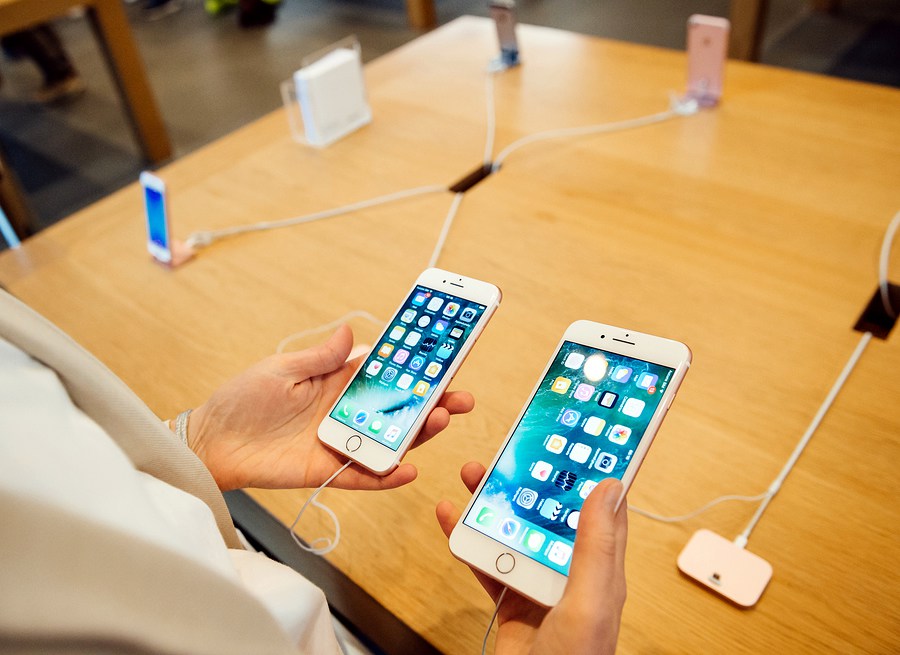
As always, the camera received a sizeable update. Optical Image Stabilisation was added to the iPhone 7 and continued in the 7 Plus. With the updated image signal processor came cinema standard wide color, promising more striking photos for users and earning praise from professional photographers.
The front facing camera also got a boost to 7 MP, along with wide color specs and image stabilization to align it closer to the back camera. The 7 Plus got a second (back facing) 12 MP camera with a telephoto lens that allows users to zoom in 10x. Additionally, the two-lens combination can produce a shallow depth of field, giving amateur phone-photographers way more power.
The iPhone 7 generation also solved a complaint that many iPhone users have had for years: lack of stereo sound. A second speaker was added to the top, making landscape viewing a more comfortable aural experience.
Of course, we cannot ignore the elephant in the room. Yes, Apple did away with the headphone jack. The rumor mill started in on this months ago, sparking quite a bit of rage from the Internet, although it remains to be seen how actual consumers will take to the change.
To help users adjust, Apple is including a new set of Lightning headphones in every iPhone 7 and 7 Plus box, in addition to a Lightning to ⅛-inch analog adapter for those who still want to use their old headphones.
There is no doubt that the iPhone changed the world.
How The iPhone Has Changed Our Lives
Apple has been setting the gold standard for smartphones since 2007, constantly raising the bar and daring competitors to join them. Its innovations are so firmly integrated in our daily activities, that we easily forget what our “smartphone” experience was like before the iPhone.
Year by year, Apple has slowly weaned us off of every other device. Stand-alone GPS devices gather dust in closets, digital cameras were given away, books donated to the library, even gaming systems could be partially replaced by the iPhone. We can have all of those devices built right into our phones nestled safely in our pockets.
We have instant entertainment, regardless of whether we are on public transportation or waiting in line at the grocery store.
Perhaps the biggest effect of the iPhone was the way we communicate. Who actually talks on their phone anymore? Millennials are notorious for hating talking on the phone — yet they are constantly on it. Instead, they are tweeting, posting photos to Instagram, or texting. Why would we talk when we can FaceTime? Or send a photo?
iPhones are not the only smartphones with touch screens, GPS, video calling, and fancy cameras on the market. Competitors have caught up and created new features of their own, but it’s hard to argue with history.
The iPhone laid the groundwork, paving the way for innovations from others. You have to wonder — if Steve Jobs hadn’t done it first, where would we be today?
[This post first appeared on Proto.io and has been reproduced with permission.]







